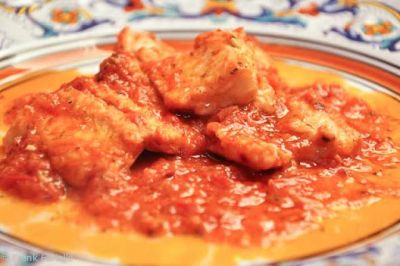dalla cucina di Diana Lucarino-Diekmann
Truth be told, I hate eels! Eels are elongated fish, found in both ocean and freshwater environments that can deliver a nasty bite if you offer your hand. However, they are a fantastic source of omega-3 fatty acids and contain a good amount of minerals. Much of the eel in the world is endangered due to overfishing and changing habitats.
Our likes and dislikes of food, as well as other things in our lives, stem from our experiences with that food, especially our first experience with it. That is the story of my relationship with eel. Suffice it to say, it was not a good experience.
Each province of Italy has its own Christmas traditions. In Naples, one of the most popular is serving capitone (smaller, male eel) or anguilla (much longer and larger female) on la Vigilia di Natale. This tradition is especially prevalent among Catholics in southern, coastal Italy where fresh seafood is so readily available.
The ancient tradition of eating fish on la cena della Vigilia comes from the Roman Catholic custom of abstaining from meat and dairy on the eve of Christmas, while waiting for the midnight birth of Jesus. One of the most popular Italian traditions in America is the Feast of the Seven Fishes. It is unclear where it was popularized but appears that it was first introduced in the U.S. by southern Italian immigrants in NYC’s Little Italy in the late 1800’s.
The number seven is rooted in ancient times going back to the Bible, where it comes up often. There are seven sacraments, seven days of creation, and seven deadly sins, to name a few. The meal includes seven fishes that are considered traditional such as baccalà, smelts, calamari, clams, shrimp, eel, and many others. The choice of fishes and their preparation is influenced by the participant’s particular region of origin. What is available at the time and place, the culture of that region, and specific familial traditions.
My parents were born in a small town in an inland valley, in the province of Molise in southern Italy. Fish was not readily available there, so it never became a staple in my mom’s childhood home and consequently we ate it infrequently as well, growing up in Cleveland. Spaghetti aglio e olio with sardines and baccalà (salted, dried codfish) prepared three different ways had been our tradition on Christmas Eve.
Until one year, when I was about eight-years-old. I found a “snake” hanging upside down from the rafters in our basement dripping blood from its mouth! I was too scared to touch it. And that was good, because I recently found out that eel blood is toxic to humans although cooking and the digestive process destroy the toxic protein.
This “snake” was cut up, fried, and found its way into our tomato sauce and then onto our spaghetti on Christmas Eve. Growing up in my family, doing what you were told without question and eating everything on your plate were the two rules that were never broken. I was always a good eater and loved my mother’s cooking, but I gagged while eating that year’s cena della Vigilia thinking that I was eating a “snake.” I never did find out that it was a fish until I was much older. I am now a vegetarian, but still enjoy the rest of our traditional Christmas Eve meal, especially cut up orange slices sprinkled with sugar and drizzled with a bit of olive oil! Much tastier than that eel!



